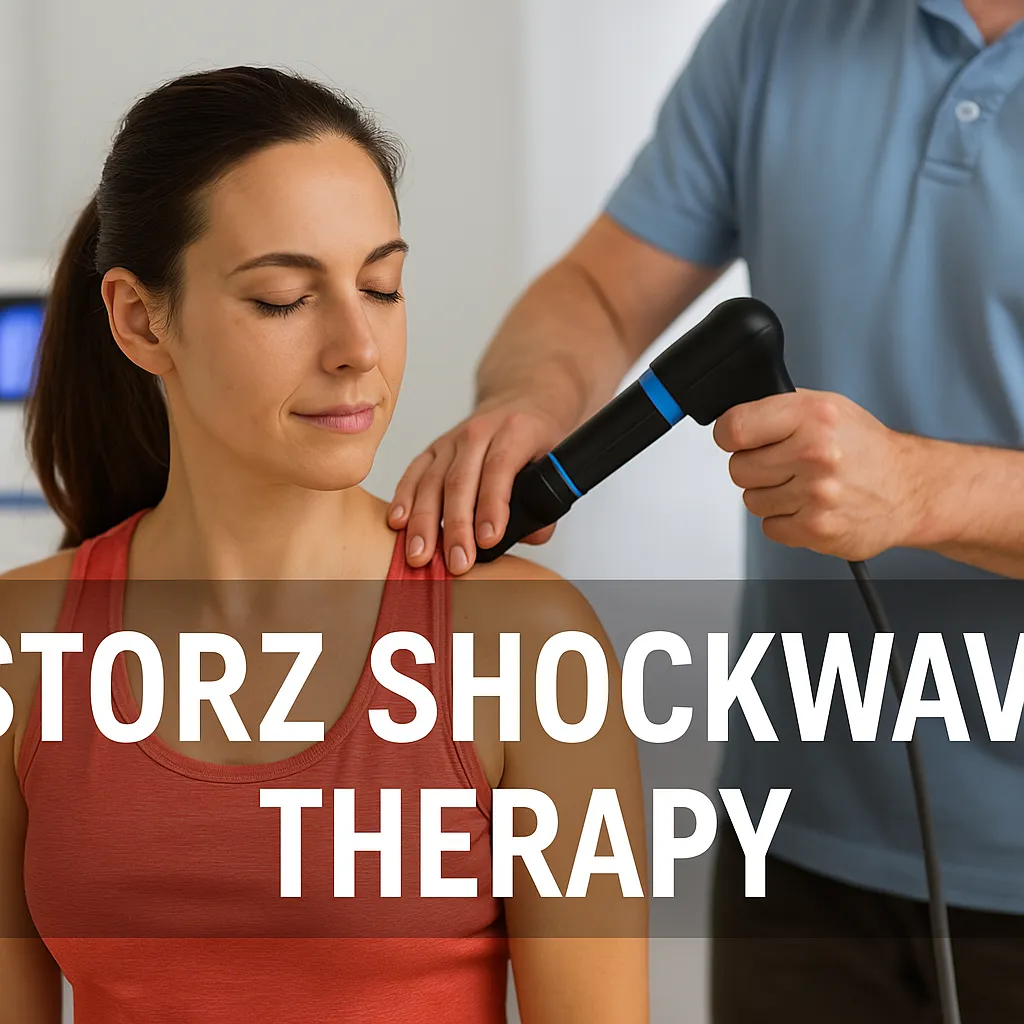
Does Shockwave Therapy hurt? Find out here!
Storz Shockwave Therapy: A Non-Invasive Solution for Chronic Pain Relief
When it comes to managing pain, most of us are always searching for effective, long-term relief without relying on surgery or heavy medications. Whether you’re dealing with a past injury, chronic condition, or everyday aches and pains, finding the right treatment can make all the difference.
One of the most innovative non-invasive therapies available today is Storz Shockwave Therapy. This advanced treatment is FDA-cleared and clinically proven to reduce pain and restore function in a wide range of musculoskeletal conditions. So what exactly is it, and how does it work? Let’s explore.
What Is Storz Shockwave Therapy?
Storz Shockwave Therapy is a form of extracorporeal shockwave treatment that uses high-energy acoustic waves to stimulate healing within the body. These waves travel through the skin to reach deep tissues, triggering biological responses that help break up scar tissue, improve circulation, and accelerate tissue repair.
It’s commonly used to treat:
Plantar fasciitis
Achilles tendonitis
Patellar tendonitis
Lower back pain
Shoulder pain
Tennis and golfer’s elbow
Shin splints
Patellar tendinopathy
General tendonitis and muscle strain
This therapy is safe for people of all ages and is an excellent alternative to surgery or chronic medication use.
How Does Storz Shockwave Therapy Work?
Shockwave therapy harnesses acoustic energy to trigger the body’s natural healing process. The shockwaves create microtrauma in the targeted tissue, which leads to:
Increased blood flow
Activation of cellular repair
Reduction in inflammation
Breakup of fibrotic tissue and calcifications
Here’s what to expect during a typical session:
A conductive gel is applied to the area being treated.
A hand-held device delivers targeted acoustic waves through the skin.
You may feel mild pressure or pulsing in the area, which is generally well tolerated.
Most sessions last about 15 to 20 minutes, and patients often notice improvement after just 1–3 visits, with optimal results typically seen after 4–6 treatments.
What Does It Feel Like?
Many patients ask, “Does it hurt?” The answer is usually no. While you may feel a slight tingling or tapping sensation during treatment, most people describe it as very tolerable—and often even relaxing.
If you experience sensitivity, the therapist can easily adjust the intensity of the waves to match your comfort level. Post-treatment effects are minimal and may include slight redness or soreness, which usually resolves within 24 hours.
Why Choose Storz Shockwave Therapy?
✅ Non-surgical and drug-free
✅ No downtime or recovery period
✅ Clinically proven for chronic and acute pain
✅ Fast, in-office sessions
✅ Effective for sports injuries, joint pain, and overuse conditions
Shockwave therapy is widely used by orthopedic doctors, chiropractors, and physical therapists worldwide—and now it’s available right here in Connecticut.
Is It Right for You?
Storz Shockwave Therapy is a great option for anyone experiencing:
Chronic or nagging musculoskeletal pain
Injuries that haven’t responded to other treatments
Tendon or ligament pain that interferes with daily activity
A desire to avoid surgery or long-term medications
At Connecticut Disc and Laser Therapy Centers, we take a personalized approach to every patient, combining shockwave therapy with complementary services like MLS Laser Therapy, spinal decompression, and chiropractic care.
Experience the Healing Power of Storz Shockwave Therapy
Don’t let pain hold you back from the activities you enjoy. Storz Shockwave Therapy offers a proven, non-invasive path to relief and healing. Whether you're dealing with a chronic issue or a recent injury, we can help.
📞 Call us today at 203-456-9299 or book a consultation online to learn more about Storz Shockwave Therapy and how it can support your recovery.
Related Articles
📖 Shockwave Therapy in Sports and Orthopedic Medicine – NCBI
📖 Understanding Shockwave Therapy – Cleveland Clinic
📖 Benefits of Shockwave Therapy for Pain – Harvard Health
